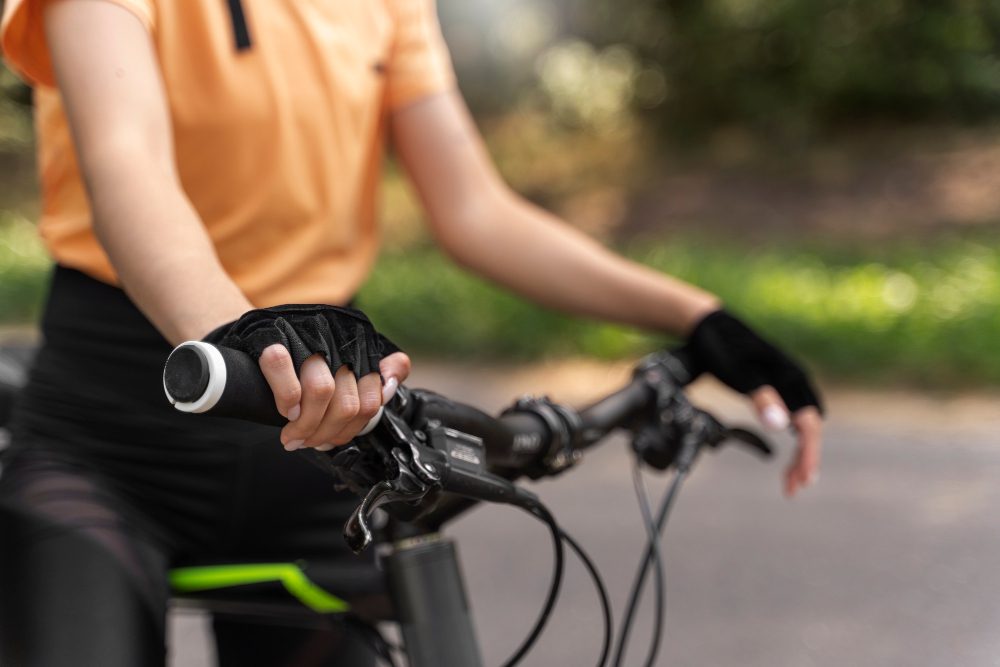Why do my hands go numb when I ride my road bike?
Introduction
Riding a road bike can be an exhilarating experience, but for some cyclists, it can also lead to an uncomfortable sensation of numbness in the hands. This phenomenon, known as handlebar palsy or cyclist’s palsy, is a common issue that many riders encounter. Understanding why this happens and how to prevent it can greatly enhance your cycling experience.
The Anatomy of the Problem
When you ride a road bike, your hands bear a significant amount of weight as they grip the handlebars and support your upper body. This constant pressure on the nerves and blood vessels in your hands can restrict circulation and compress the nerves, leading to numbness and tingling sensations. The main culprits for this condition are often improper positioning and excessive pressure on the handlebars.
The Role of Bike Fit
Having a proper bike fit is crucial to prevent hand numbness while riding. When your bike is not adjusted to your body proportions, you may end up placing too much weight on your hands, putting unnecessary strain on the nerves and blood vessels. Consulting with a professional bike fitter can help you find the optimal position, ensuring that your weight is distributed more evenly across your hands, arms, and upper body.
Grip and Hand Position
Another factor contributing to hand numbness is the way you grip the handlebars. Holding onto the bars too tightly can significantly increase pressure on the nerves and blood vessels, exacerbating the problem. Additionally, keeping your hands in the same position for prolonged periods can also contribute to numbness. To alleviate this issue, try alternating between different hand positions and regularly shake out your hands to promote blood flow.
Preventive Measures
Taking proactive steps can help prevent hand numbness before it even occurs. Here are some tips to consider:
- Check your bike fit: Ensure that your bike is properly adjusted to your body proportions.
- Vary your hand positions: Alternate between positions on the handlebars to distribute pressure evenly.
- Keep your grip relaxed: Avoid gripping the bars too tightly, as this can increase pressure and tension in your hands.
- Take breaks and stretch: Regularly take breaks during long rides and stretch your hands and fingers to relieve tension and promote blood flow.
“Proper bike fit and mindful hand positioning can significantly reduce the occurrence of hand numbness during cycling.” – Cycling Expert
How do you prevent handlebar palsy?
What is handlebar palsy?
Handlebar palsy, also known as ulnar neuropathy, is a condition that affects cyclists, particularly those who ride road bikes for long periods of time. It is characterized by numbness, tingling, and weakness in the hands and fingers, specifically in the pinky and ring fingers.
Causes of handlebar palsy
The main cause of handlebar palsy is prolonged pressure on the ulnar nerve, which runs along the inside edge of your hand, near the pinky finger. This pressure is often caused by leaning heavily on the handlebars or gripping them too tightly for an extended period.
Preventing handlebar palsy
1. Adjust your bike fit: Ensure that your bike is properly fitted to your body. This includes adjusting the handlebar height, reach, and angle to minimize pressure on the ulnar nerve.
2. Change hand positions frequently: Avoid keeping your hands in the same position for too long. Shift your grip regularly, moving from the tops to the drops of the handlebars, or utilize different hand positions available on your bike.
3. Use padded gloves: Invest in a good pair of cycling gloves with adequate padding to cushion the pressure on your hands and absorb vibrations from the road.
4. Relax your grip: Try to maintain a relaxed grip on the handlebars rather than a death grip. Keeping a looser grip will help to reduce the pressure on the ulnar nerve.
Treatment for handlebar palsy
If you start experiencing symptoms of handlebar palsy, it is important to seek medical advice. Treatment options may include:
- Resting and avoiding activities that aggravate the condition.
- Physical therapy exercises to strengthen the hand and wrist muscles.
- Wearing a splint or brace to immobilize the affected area and alleviate pressure on the nerve.
- In severe cases, corticosteroid injections or surgery may be recommended by a medical professional.
“It’s essential to listen to your body and make necessary adjustments to prevent or manage handlebar palsy. Don’t ignore persistent symptoms as they can worsen over time.”
Conclusion
Handlebar palsy can be a troublesome condition for road cyclists, but with proper precautions and adjustments, it can often be prevented. By taking steps to improve your bike fit, changing hand positions regularly, using padded gloves, and maintaining a relaxed grip, you can greatly reduce the risk of developing handlebar palsy and enjoy more comfortable rides. Remember to consult a healthcare professional if symptoms persist or worsen.



